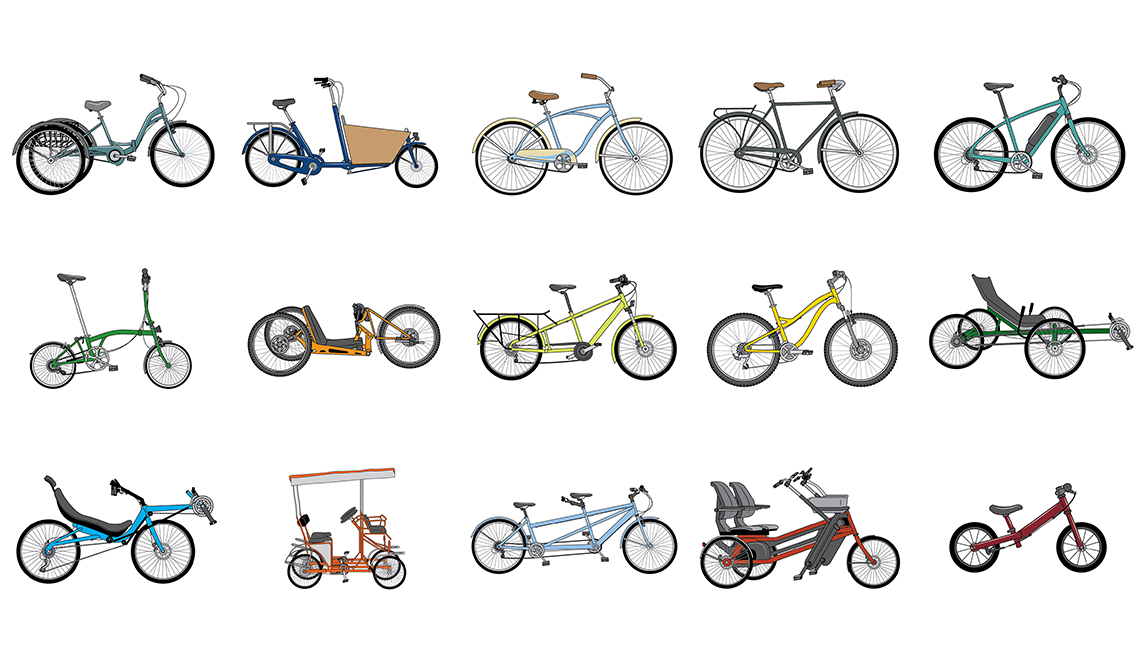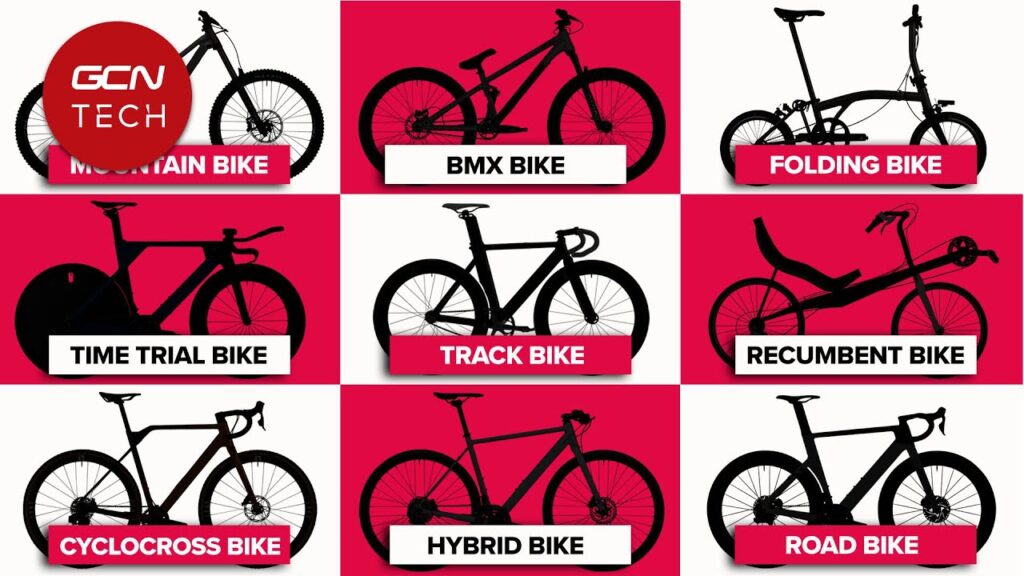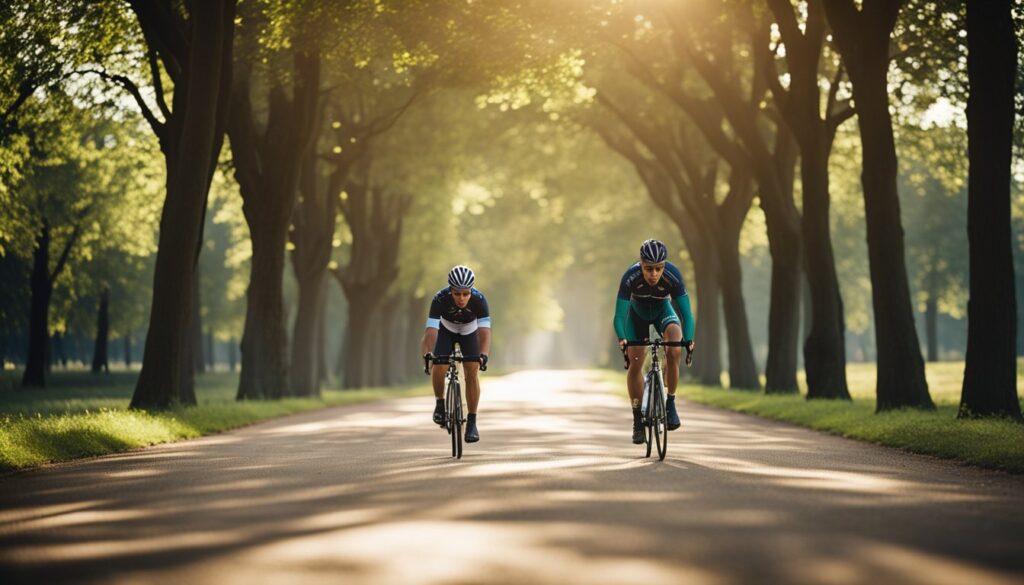Are you curious about the world of cycling and how it can transform your life? Whether you’re looking for a new hobby, a way to stay fit, or an adventurous sport, cycling offers something for everyone.
Imagine the thrill of racing down a mountain trail, the satisfaction of completing a long-distance ride, or simply the joy of a leisurely ride through your neighborhood. Each type of cycling has its own unique charm and benefits, waiting for you to explore.
In this guide, we’ll take you through the different types of cycling, helping you find the perfect match for your lifestyle and goals. Get ready to discover the cycling path that’s right for you and unlock the endless possibilities that await.

Credit: totalwomenscycling.com
1. Road Cycling
Road cycling is a popular sport and leisure activity. It involves riding bicycles on paved roads. Many people enjoy it for fitness, competition, or fun. It offers a great way to explore different areas. Riders can travel through cities, countryside, or mountain roads. Road cycling suits all ages and skill levels. It provides both physical and mental benefits.
Benefits of Road Cycling
Road cycling improves cardiovascular health. It strengthens the heart and lungs. Regular cycling helps build muscle strength. It enhances leg and core muscles. Cycling burns calories effectively, promoting weight loss. It reduces stress and boosts mental health. Riding outdoors offers fresh air and scenic views.
Essential Gear for Road Cycling
Proper gear ensures a safe and comfortable ride. A well-fitted helmet protects the head. Padded cycling shorts reduce friction and enhance comfort. A lightweight jersey keeps the rider cool. Cycling shoes with clips improve pedaling efficiency. Sunglasses shield eyes from the sun and debris. A hydration pack or water bottle keeps you hydrated. A repair kit helps fix minor issues on the go.
Popular Road Cycling Routes
Many routes offer unique challenges and scenery. The Pacific Coast Highway in California is famous for its ocean views. The Great Ocean Road in Australia offers stunning coastal landscapes. The Col du Tourmalet in France is a classic climb for cyclists. The Ring of Kerry in Ireland presents beautiful countryside vistas. The Amalfi Coast in Italy combines mountains and sea views.
2. Mountain Biking

Credit: www.aarp.org
Mountain biking is a thrilling sport enjoyed by many outdoor enthusiasts. It offers an exciting way to explore nature and experience adventure. Riders navigate rugged terrains and scenic trails, testing their endurance and skills. The sport is both a physical challenge and an adrenaline rush.
Thrill of Off-road Trails
Off-road trails provide an exhilarating challenge for mountain bikers. The rugged paths wind through forests and mountains. Each trail offers unique obstacles and stunning views. Riders encounter rocks, roots, and steep climbs. The thrill lies in overcoming these challenges. The sense of achievement is unmatched.
Types of Mountain Bikes
Mountain bikes come in various types to suit different terrains. Hardtail bikes have front suspension and are lighter. They are ideal for smoother trails. Full-suspension bikes offer suspension on both wheels. These bikes excel on rough terrains and downhill rides. Fat bikes have oversized tires for snowy or sandy paths.
Safety Tips for Mountain Biking
Safety is crucial for a fun mountain biking experience. Wear a helmet to protect your head. Check your bike for any mechanical issues. Carry a repair kit for emergencies. Use lights and reflectors if biking in low light. Stay hydrated and carry water with you. Be aware of weather conditions before starting your ride.
3. Cyclocross
Cyclocross offers a thrilling ride through diverse terrains. This cycling style combines road, mountain, and off-road elements. Riders navigate mud, grass, sand, and obstacles, testing their skills. It’s a race against time and terrain, providing an adrenaline rush. Cyclocross challenges both the body and mind.
Unique Features of Cyclocross
Cyclocross races often occur in fall and winter. Riders face muddy tracks and harsh weather. Courses include steep hills and sharp turns. Obstacles require riders to dismount and carry their bikes. This adds an exciting twist to the race.
Each race lasts about an hour. Riders complete multiple laps around a short circuit. The pace is fast and intense. Spectators cheer as riders tackle the challenges.
Cyclocross Bike Design
Cyclocross bikes are unique. They resemble road bikes but with key differences. Their tires are wider for better grip. Frames are lightweight yet sturdy. Brakes are strong to handle mud and wet conditions.
Handlebars offer control for tricky maneuvers. Bikes are built to withstand rough terrain. Quick releases make dismounting easy. Cyclocross bikes balance speed and durability.
Training for Cyclocross Races
Training requires dedication and skill. Riders practice dismounting and remounting quickly. They train for various terrains, from mud to sand. Strength and endurance are crucial.
Interval training improves speed and stamina. Practicing on different surfaces helps adjust riding techniques. Riders often train in groups for motivation. Proper nutrition and rest support performance.
4. BMX Cycling
BMX cycling offers thrilling experiences on specially designed bikes. Riders perform tricks on dirt tracks and skate parks. It combines agility and speed, making it a unique type of cycling adventure.
BMX Cycling is an adrenaline-packed discipline that has captured the hearts of thrill-seekers and athletes alike. Originating in the late 1960s, BMX stands for Bicycle Motocross, a sport where riders perform tricks or race on specially designed bikes. Whether you’re a seasoned rider or a newbie looking for your next adventure, BMX offers a unique blend of excitement and skill.
BMX Disciplines
BMX cycling is not a one-size-fits-all sport. It comprises various disciplines, each offering its own set of challenges and thrills. BMX Racing involves fast-paced competition on dirt tracks with jumps and banked corners. On the other hand, BMX Freestyle focuses on performing tricks in skate parks or street settings. Have you ever wondered which discipline aligns with your personality and skills? Trying out different styles might just help you discover your perfect match.
Freestyle Vs. Racing BMX
Freestyle and Racing BMX bikes are designed for different purposes. Freestyle BMX bikes are sturdy and often have thicker frames to withstand hard landings and tricks. In contrast, Racing BMX bikes are lighter to maximize speed and agility on tracks. When I first tried BMX Racing, I was amazed at how quickly the bike picked up speed, making every jump feel exhilarating. Which type of BMX cycling appeals to you more—racing against the clock or defying gravity with tricks?
BMX Bike Setup
Setting up your BMX bike correctly can significantly enhance your performance. Start by selecting the right frame size; a good fit is crucial for control and comfort. Adjust the seat height according to your riding style; lower seats are common in freestyle for better maneuverability. Don’t forget about the tire pressure; different terrains require different setups.
When I adjusted the tire pressure on my BMX bike for the first time, I was surprised at the difference it made in grip and speed. Have you ever considered how a simple tweak to your bike could improve your ride?
Trying out BMX cycling can be an exhilarating journey. Whether you’re racing to the finish line or perfecting that jaw-dropping trick, the right setup and discipline can make all the difference. Ready to give BMX a spin?
5. Touring Cycling
Touring cycling is an exciting way to explore the world. It combines the thrill of adventure with the joy of pedaling through diverse landscapes. Touring cycling is not just a sport; it’s a journey. It’s a chance to connect with nature, experience different cultures, and challenge yourself. Whether you’re cycling through the mountains or along the coast, touring cycling offers endless possibilities.
Planning Long-distance Tours
Planning is crucial for a successful long-distance bike tour. Start with a clear route map and itinerary. Consider the distance you can cover daily comfortably. Check the weather conditions for your chosen route. Pack essentials like water, food, and a first-aid kit. Research accommodation options along your path. Prepare for unexpected events with backup plans.
Touring Bikes And Gear
Choosing the right bike is essential for touring cycling. Touring bikes are designed for comfort and endurance. They have sturdy frames and can carry heavy loads. Look for bikes with multiple gears for varied terrain. Invest in quality gear like panniers and racks. Comfortable clothing and helmets are also important. Ensure your bike is well-maintained before starting the tour.
Best Destinations for Bike Touring
Explore breathtaking destinations on your bike. The Pacific Coast Highway offers stunning ocean views. Visit Tuscany for its rolling hills and rich culture. The Great Divide Mountain Bike Route provides thrilling challenges. Experience the charm of the Loire Valley in France. Discover the beauty of New Zealand’s landscapes. Each destination offers unique experiences for touring cyclists.
Credit: prodeu45.my.salesforce-sites.com
6. Track Cycling
Track cycling is a thrilling and fast-paced sport. It takes place in a velodrome. This specialized environment allows cyclists to reach high speeds. Track cycling requires skill, precision, and endurance. Riders compete on fixed-gear bicycles with no brakes. The sport features various events, each with unique challenges.
Velodrome Racing Explained
A velodrome is an oval-shaped track with steeply banked sides. The banking helps cyclists maintain speed through corners. Velodromes are built for speed and excitement. Racing on these tracks demands focus and agility. Cyclists must navigate turns and maintain position at high speeds. Velodrome racing is both thrilling and demanding.
Track Cycling Events
Track cycling includes several exciting events. The Sprint is a short, intense race between two riders. The Keirin involves multiple cyclists following a pacing motorbike before sprinting to the finish. The Omnium is a multi-race event testing different skills. The Team Pursuit involves teams racing against the clock. Each event offers unique challenges and excitement.
Choosing A Track Bike
Track bikes are built for speed and simplicity. They feature a fixed gear and no brakes. Lightweight frames and aerodynamic designs help riders go faster. Choosing the right size and fit is crucial. Comfort and control are key for performance. Consider consulting a professional for the best advice on track bikes.
7. Commuter Cycling
Commuter cycling is more than just a mode of transportation; it’s a lifestyle choice that offers flexibility and freedom. Whether you’re navigating bustling city streets or serene suburban paths, cycling to work can be a refreshing way to start and end your day. Imagine arriving at your office invigorated, having already ticked off your daily exercise. Sounds good, doesn’t it?
Benefits of Cycling to Work
First and foremost, cycling to work is an excellent way to integrate exercise into your daily routine. It burns calories, improves cardiovascular health, and reduces stress. Plus, you’ll likely save money on gas, parking, or public transportation fares.
Moreover, cycling is environmentally friendly. By choosing to pedal instead of drive, you’re reducing your carbon footprint. It’s a small step towards tackling climate change, but every effort counts.
Lastly, cycling can improve your mental health. The rhythmic motion of pedaling, combined with the fresh air, can boost your mood and increase creativity. Have you ever noticed how a bike ride clears your head?
Choosing A Commuter Bike
Selecting the right bike for commuting is crucial. Consider your route first: are there hills, or is it mostly flat? A bike with multiple gears can make hill climbs easier.
Think about comfort, especially if you have a longer commute. A hybrid bike offers a balance between road and mountain bikes, providing both speed and comfort.
Durability is also key. Look for a bike with sturdy tires and a reliable frame, especially if you’ll be riding on rough terrain or in varying weather conditions.
Essential Commuter Accessories
Accessories can make or break your commuting experience. A helmet is a must-have for safety. Don’t leave home without it. Invest in a good-quality lock to secure your bike. Theft can happen anywhere, and a strong lock provides peace of mind.
Lights and reflectors are essential, especially for early morning or evening rides. They ensure you’re visible to drivers and other cyclists. Consider a waterproof backpack or panniers for carrying your belongings. This keeps your items dry and makes your ride more comfortable.
Are you ready to transform your commute into an adventure? With the right bike and accessories, you’ll not only enjoy your ride but also contribute positively to your health and the environment.
8. Gravel Cycling
Gravel cycling offers a unique adventure on mixed terrain. Riders explore scenic routes with varying surfaces like dirt and gravel. This type of cycling suits all skill levels, combining excitement with the beauty of nature.
Gravel cycling is a thrilling and versatile form of biking that’s capturing the hearts of adventure seekers everywhere. It blends the endurance of road cycling with the rugged charm of mountain biking, offering a unique challenge for those eager to explore beyond the pavement. As you pedal through varying terrains, the simplicity of gravel cycling becomes its allure, where freedom meets thrill on every ride.
Exploring Gravel Paths
Imagine cycling through winding dirt roads, surrounded by nature’s untouched beauty. Gravel paths often take you off the beaten track, offering a peaceful escape from crowded city routes. These paths are like hidden gems, allowing you to discover landscapes you might otherwise miss.
Exploring gravel paths not only tests your physical endurance but also opens your mind to new experiences. Each turn can lead to a new adventure, whether it’s a serene forest trail or a challenging uphill climb. Do you feel the call of the wild yet?
Gravel Bikes Features
Gravel bikes are designed to handle diverse terrains with ease. They typically feature wider tires for better grip and stability on loose surfaces. Unlike traditional road bikes, gravel bikes often have a more relaxed geometry, providing comfort during long rides.
Many gravel bikes come with mounts for racks and bags, making them perfect for bikepacking adventures. The versatility of a gravel bike means you can switch from tarmac to trails without missing a beat. Have you considered what features would best suit your cycling style?
Preparing for Gravel Rides
Preparation is key to a successful gravel ride. Start by checking your bike for any maintenance needs—ensure your tires are properly inflated and your brakes are in good condition. A comfortable ride begins with the right gear, so dress in layers and opt for moisture-wicking materials.
Pack essentials like water, snacks, and a basic repair kit. It’s crucial to plan your route ahead of time and inform someone of your plans. Have you thought about what extra precautions you might need for your next gravel adventure?
Gravel cycling offers an unparalleled experience, blending the thrill of exploration with the joy of cycling. So, why not gear up and find your perfect gravel path today?
9. Electric Cycling
Electric cycling offers a unique experience among different types of cycling. It combines traditional pedaling with electric assistance, making rides easier and more enjoyable. Ideal for commuting or leisurely rides, it reduces effort while still providing exercise.
Electric cycling has taken the world by storm, offering a fresh and exciting way to experience the outdoors. With the rise of electric bikes, or e-bikes, cycling is more accessible than ever. Whether you’re a commuter, a leisure rider, or someone looking to conquer challenging terrains without breaking a sweat, e-bikes provide a versatile option.
Rise of E-bikes
E-bikes are not just a trend; they’re transforming how people think about cycling. Sales have skyrocketed in recent years, with people embracing the convenience and ease they bring. Many find themselves riding more frequently, thanks to the extra boost that e-bikes offer, making cycling a viable option for people of all fitness levels.
Imagine the freedom of gliding up a steep hill without gasping for air. That’s the power of e-bikes. They empower riders to explore further and tackle routes they wouldn’t normally consider. Have you ever wondered how much more you could see on your daily rides with a little extra help?
Types of Electric Bikes
The world of e-bikes is diverse, catering to different needs and preferences. There are three main types: commuter e-bikes, mountain e-bikes, and folding e-bikes.
– Commuter E-Bikes: Perfect for city dwellers, these bikes are designed for comfort and efficiency on paved roads. With features like built-in lights and racks, they make daily commutes a breeze.
– Mountain E-Bikes: Built for adventure, these bikes offer robust frames and powerful motors to handle rough trails. They let you enjoy the thrill of mountain biking without the exhaustion.
– Folding E-Bikes: Ideal for those with limited storage space or who need a bike that’s easy to transport. These compact bikes fold quickly, making them a great choice for urban living.
Which type of e-bike aligns with your lifestyle and needs?
E-bike Maintenance Tips
Keeping your e-bike in top condition ensures it runs smoothly and lasts longer. Regular maintenance is key.
– Battery Care: Always charge your battery after a ride and avoid letting it run completely flat. Store it in a cool, dry place to prolong its lifespan.
– Tire Checks: Just like regular bikes, e-bike tires need consistent pressure checks. Properly inflated tires improve efficiency and safety.
– Brake Inspection: E-bikes are heavier than traditional bikes, so their brakes require more attention. Regularly check brake pads and replace them if worn down.
How often do you take a moment to ensure your e-bike is in peak condition? Simple maintenance can make a significant difference in your riding experience.
FAQs About Type of Cycling
How Many Types of Cycling Are There?
Cycling includes road biking, mountain biking, BMX, cyclocross, track cycling, touring, and commuting. Each type offers unique benefits and challenges, catering to different preferences and skill levels. Whether racing or casual riding, cycling provides excellent exercise and adventure opportunities.
What Are The 4 Types of Cyclists?
There are four types of cyclists: recreational, commuter, competitive, and utility. Recreational cyclists ride for fun and exercise. Commuters use bikes for daily travel. Competitive cyclists race professionally. Utility cyclists use bicycles for practical transportation, like cargo delivery. Each type has distinct goals and benefits.
What Is The Most Popular Type of Cycling?
Road cycling is the most popular type of cycling worldwide. It offers accessibility and diverse routes for enthusiasts. Cyclists enjoy scenic views, urban settings, and competitive races. Road cycling is perfect for fitness, commuting, and leisure, attracting a wide range of participants. This versatility makes it a favorite choice among cyclists.
What Are The Different Types of Cycling Classes?
Cycling classes include indoor cycling, spinning, HIIT cycling, virtual cycling, and outdoor group rides. Indoor cycling focuses on endurance and strength. Spinning emphasizes fast-paced cardio. HIIT cycling combines intense intervals with recovery periods. Virtual cycling uses digital platforms for simulated experiences. Outdoor rides provide real-world cycling challenges.
Conclusion
Cycling offers diverse experiences for every enthusiast. Road cycling suits speed lovers. Mountain biking challenges with rough terrain. BMX riding thrills with tricks and jumps. Each type provides unique rewards and adventure. Beginners enjoy the ease of casual rides. Commuting by bike saves money and promotes health.
Find your preferred style and embrace the joy of cycling. Explore new paths and feel the wind. Cycling connects you with nature and fitness. Try different types of cycling and discover what suits you best. Keep pedaling and enjoy the ride!



